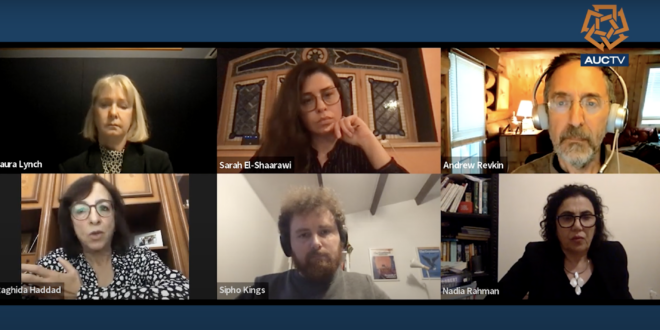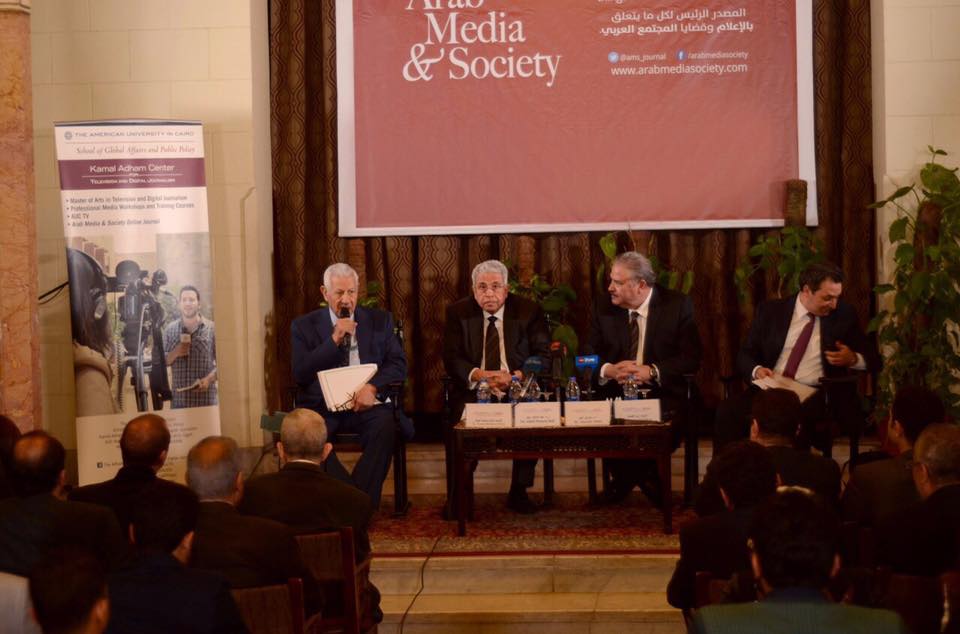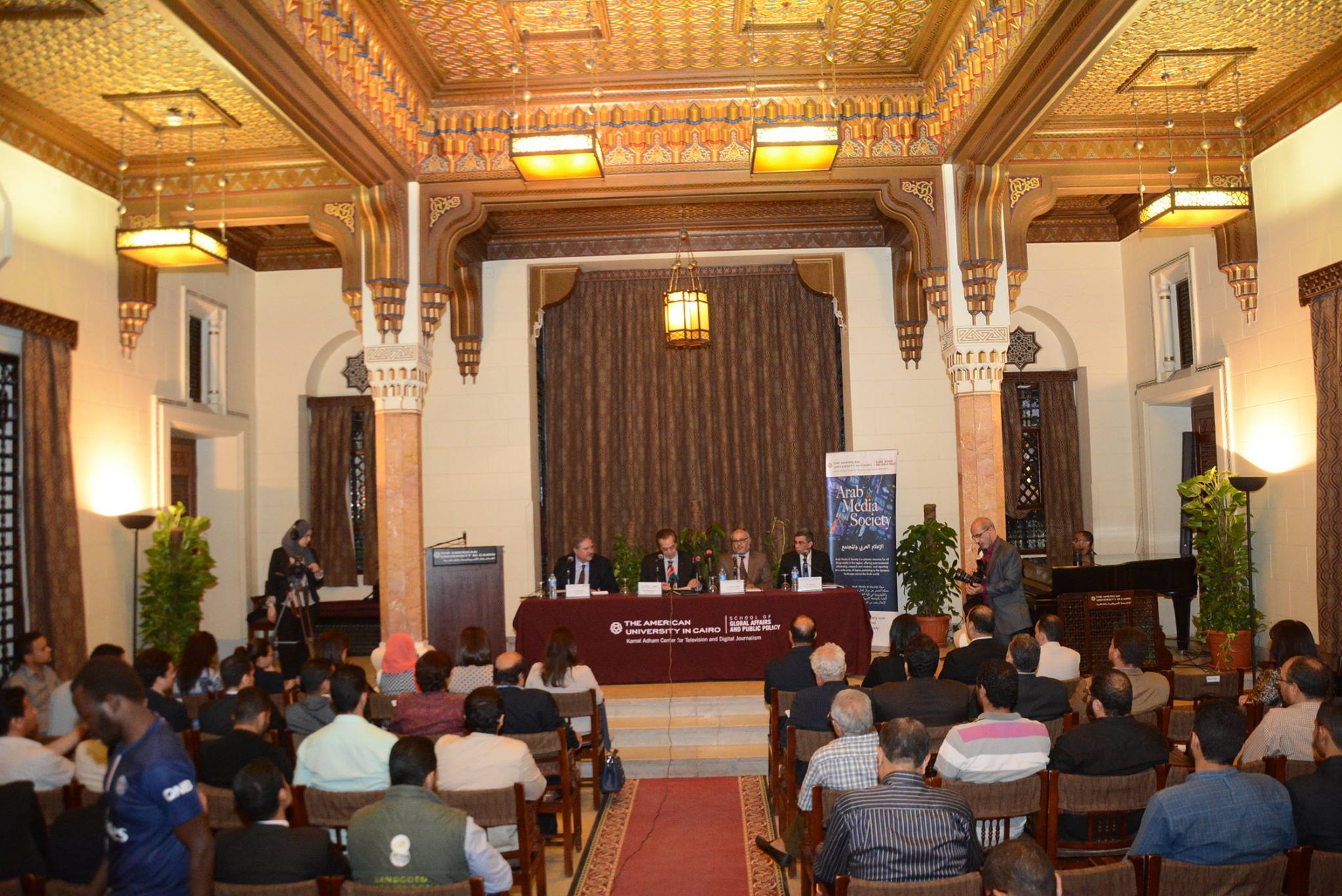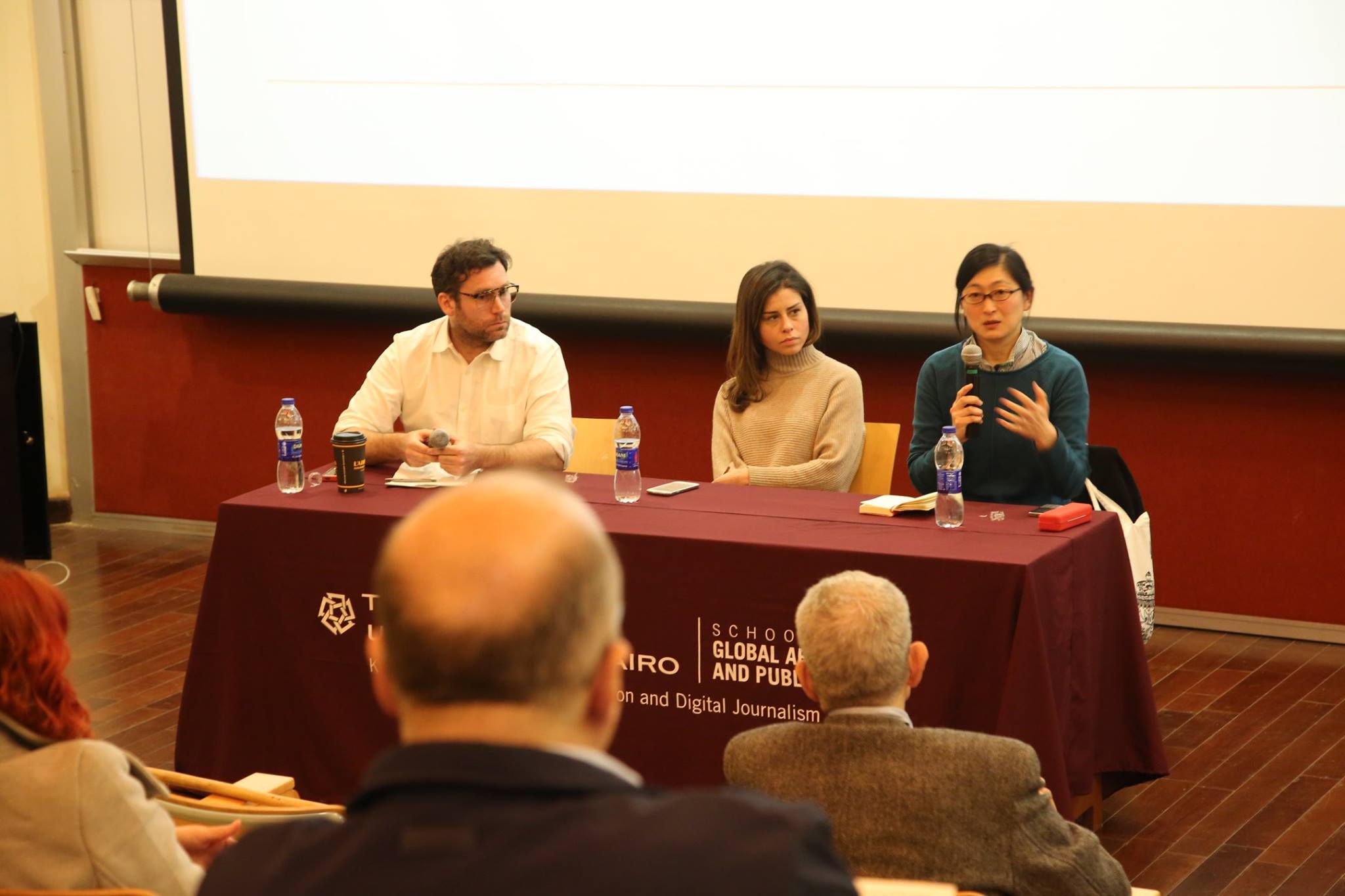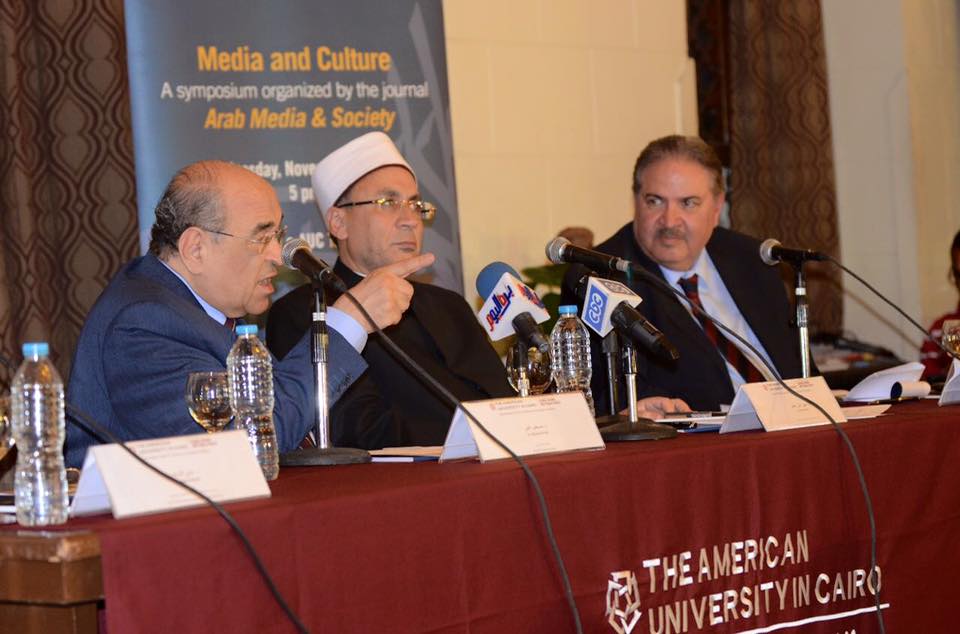On November 2, 2022, Arab Media & Society held a virtual panel discussion entitled “Reporting on Climate Change.” The panel featured a diverse group of speakers, including journalists, communicators, and educators working in the area of climate journalism and communication. The panel, hosted just days ahead of the opening of COP27 in Sharm El Sheikh, Egypt, was an opportunity to shed light on best practices and strategies for covering climate change and communicating this complex topic to a broad audience. This is especially needed in the Arab region which has had a dearth of environmental and climate journalism, with other issues such as conflict, security, and economy taking priority. In the lead up to and during COP27, both Egyptian journalists specifically and regional journalists more broadly found themselves thrown into the role of climate journalist, often for the first time.
Panelists included Andrew Revkin, one of America’s most honored and experienced environmental journalists and founding Director of the Initiative on Communication and Sustainability at Columbia University’s Earth Institute; Laura Lynch, an award-winning broadcast journalist and host of the Canadian Broadcasting Corporation’s (CBC) climate change program “What on Earth”; Raghida Haddad, a biologist, environmental journalist, and lecturer on environmental journalism; Sipho Kings, climate journalist and founder and editorial director of The Continent; and Nadia Rahman, associate professor of journalism at Zayed University in Dubai. The panel was moderated by AMS managing editor, Sarah El-Shaarawi.
Panelists shared their experience of reporting on climate change. “My first cover story on global warming was in 1988,” said Revkin, “I look back at it and sadly a lot of what was in this article is still in the headlines today. This is a slow grind of a story, it’s a building phenomenon on the earth and it’s a very hard thing for people to get their heads around.” Revkin also highlighted a shift in his thinking around the topic throughout his career, “the science story is just a small part of what we’re talking about, if you don’t understand social and behavioral norms, and political science, you can never really capture why there's inertia, why there’s a diversity of views, why it's not a simple matter of convincing people of one message.”
Expressing the importance of tailoring climate communication to the audience, as opposed to forcing information down their proverbial throats, Revkin asks “what’s your concern, whether you’re in sub-Saharan Africa, South Asia, or Tucsan, Arizona? What do you need to know about how to build a safer relationship with climate and energy?” He continues, “media can do a bigger public service by being a dynamic, engaging partner to society, rather than one-way journalism.”
Laura Lynch reaffirmed the importance of addressing climate change from a variety of vantage points. In the context of her program, Lynch explained: “from the very start of the program, I wanted it to be—yes about science—but so much more than science. We look at it from the arts, we look at it from refugee movements and immigration and internal displacement, we look at political movements within the country and abroad, we take a very wide view of what climate change is because the fact is it touches on every aspect of all of our lives.”
Lynch expressed that while admittedly radio is technically communication going one way, her team works to integrate the community they serve to the greatest extent possible, engaging with the frequent feedback the program receives. Above all, she says, “we try to focus on solutions, and when I say that, we’re not being naïve. We’re not saying everything’s going to be fixed because it’s not, we know that.” Instead, Lynch’s program focuses on adaptation, mitigation, and loss and damage. Drawing parallels between the largely indigenous communities living in the North of Canada and those in the Global South, Lynch highlighted the importance of representing these communities and how they are impacted by Climate Change. “They’ve done little to contribute to it, but are on the frontlines of dealing with the fallout from it.”
Weighing in from a regional perspective, Raghida Haddad discussed the founding of Al Bi’a wa Tanmia in 1996 as the first pan-Arab environmental magazine, which was published in Beirut, but distributed all over the Arab region. In addition to covering the region, the magazine covered international environmental news, and also prioritized partnerships for educational initiatives with school-aged children. Haddad articulated the importance of beginning education at a young age; “through the children, you can get to the parents too, so you are educating the whole family,” she said. Haddad’s work has also encompassed training teachers on environmental topics and training journalists in environmental journalism, both of which are areas that have been significantly underserved in the region.
In describing the founding of the alternative newspaper The Continent, Sipho Kings echoed other panelists on the importance of meeting the audience where they are. In its format, The Continent resembles a traditional newspaper; however, it is distributed through WhatsApp, Signal, and Telegram. “The focus is on Africa, and we use those platforms because that’s where everyone is,” he said. “When COVID started, WhatsApp was the place where there was this massive amount of disinformation and all of this dangerous information, but little in the way of journalism.” Kings explains that the publication was conceived in this climate as a quality journalism product for people to both read and share. When describing their approach to covering climate and environmental issues, Kings articulated the natural integration of these issues into many of their stories, where discussions of the impact of colonial history and neocolonial corporate resource extraction on local communities invariably include elements of climate and environment. “What we try and do is not specifically do climate change stories, unless it’s COP or something like that. We try and make sure that as many of our stories as possible link to climate change or mention climate change, and that’s working really well because people know what’s affecting their communities and know what’s affecting their countries and they’ll write it if you give them a platform and pay them for it.”
All panelists concurred that a critical point for improving environmental and climate communication, not only in the Arab region, but internationally, is the increased participation of individuals with science backgrounds. Furthermore, the news cycle, particularly around events such as the COPs, is limited in its effectiveness or impact as the coverage tends to revolve around the event, whereas efforts on the ground and on a smaller scale are often what actually enable change. “The stories are really back on the ground around the world,” said Revkin, “they’re not at these conferences.” To this point, the panelists agreed that one mechanism that would empower more effective and representative coverage would be to remove financial barriers and fund not only access to the major global climate events, but also, more importantly, locally driven coverage of issues related to energy and the environment, particularly in the global south.
 Arab Media & Society The Arab Media Hub
Arab Media & Society The Arab Media Hub
